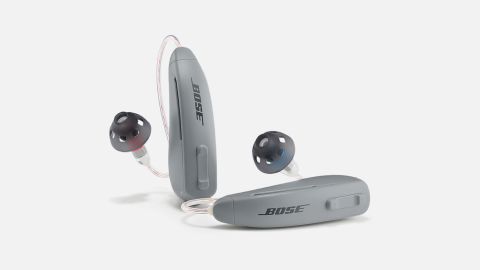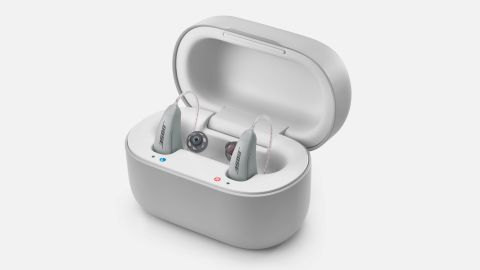New York
CNN Business
—
Walmart announced Monday that its customers can for the first time buy over-the-counter hearing aids without a prescription and medical exam by a doctor.
The move comes shortly after the US Food and Drug Administration announced a long-awaited rule change in August pertaining to hearing aids.
Instead of getting a prescription, visiting a hearing health professional and having a custom fitting, people with mild to moderate hearing loss will now be able to buy hearing aids directly from a store or online
The OTC hearing aids are available to Walmart shoppers in the US who are 18 years and older “with perceived mild-to-moderate hearing loss without a medical exam or fitting adjustment needed by an audiologist.”
Walmart
(WMT) said prices for the hearing aids range from $199 to $999 per pair, including brands such as Lexie powered by Bose (priced at $849 to $999) and HearX (priced at $199 to $299).
“Offering easy access to OTC hearing aids, something that seems quite small, is a solution that can improve our customers’ health outcomes and their ability to live better and healthier,” Dr. John Wigneswaran, chief medical officer at Walmart, said in a statement.
The retailer said shoppers can now buy the OTC hearing aids on Walmart.com and in Walmart Vision Centers in Colorado, Michigan, Missouri, Ohio, Pennsylvania, Tennessee and Texas.

It plans to soon make them available to additional Walmart Vision Centers nationwide. The company currently operates more than 3,000 Vision Centers across the country.
An estimated 1 in 8 people in the US ages 12 and older have hearing loss in both ears, and the rate increases significantly with age. About a quarter of people 65 to 74 have hearing loss, and that goes up to 50% around age 75.
The FDA said its rule change would make hearing aids much more widely available and much cheaper across the country.
The agency estimates the new rule could result in savings of about $2,800 a pair. Most private insurers don’t cover hearing aids, which aren’t cheap.

On average, people spend at least $4,000 out of pocket for devices for both ears, according to a 2020 study published in JAMA.
– CNN’s Carma Hassan and Jen Christensen contributed to this story.